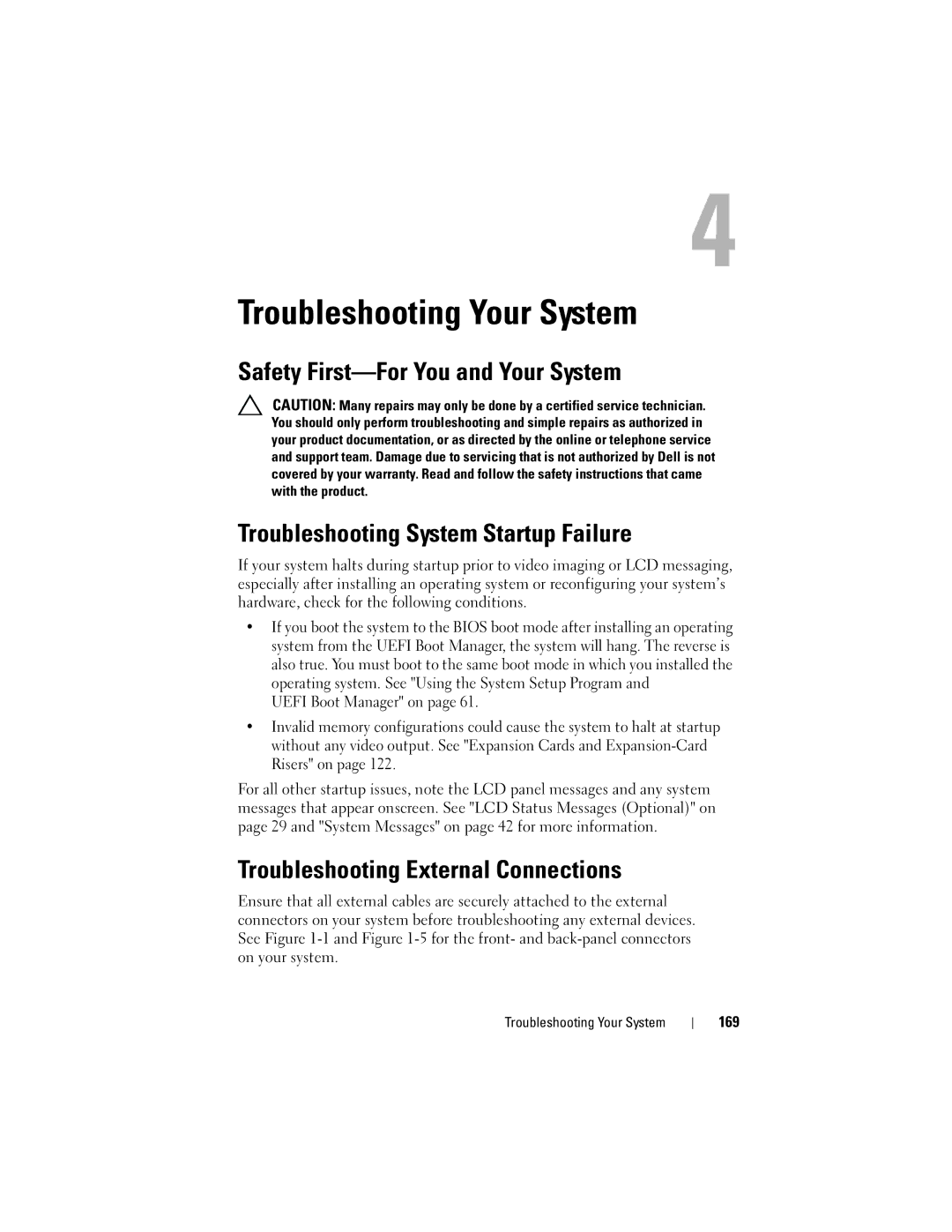
Troubleshooting Your System
Safety
CAUTION: Many repairs may only be done by a certified service technician. You should only perform troubleshooting and simple repairs as authorized in your product documentation, or as directed by the online or telephone service and support team. Damage due to servicing that is not authorized by Dell is not covered by your warranty. Read and follow the safety instructions that came with the product.
Troubleshooting System Startup Failure
If your system halts during startup prior to video imaging or LCD messaging, especially after installing an operating system or reconfiguring your system’s hardware, check for the following conditions.
•If you boot the system to the BIOS boot mode after installing an operating system from the UEFI Boot Manager, the system will hang. The reverse is also true. You must boot to the same boot mode in which you installed the operating system. See "Using the System Setup Program and
UEFI Boot Manager" on page 61.
•Invalid memory configurations could cause the system to halt at startup without any video output. See "Expansion Cards and
For all other startup issues, note the LCD panel messages and any system messages that appear onscreen. See "LCD Status Messages (Optional)" on page 29 and "System Messages" on page 42 for more information.
Troubleshooting External Connections
Ensure that all external cables are securely attached to the external connectors on your system before troubleshooting any external devices. See Figure
